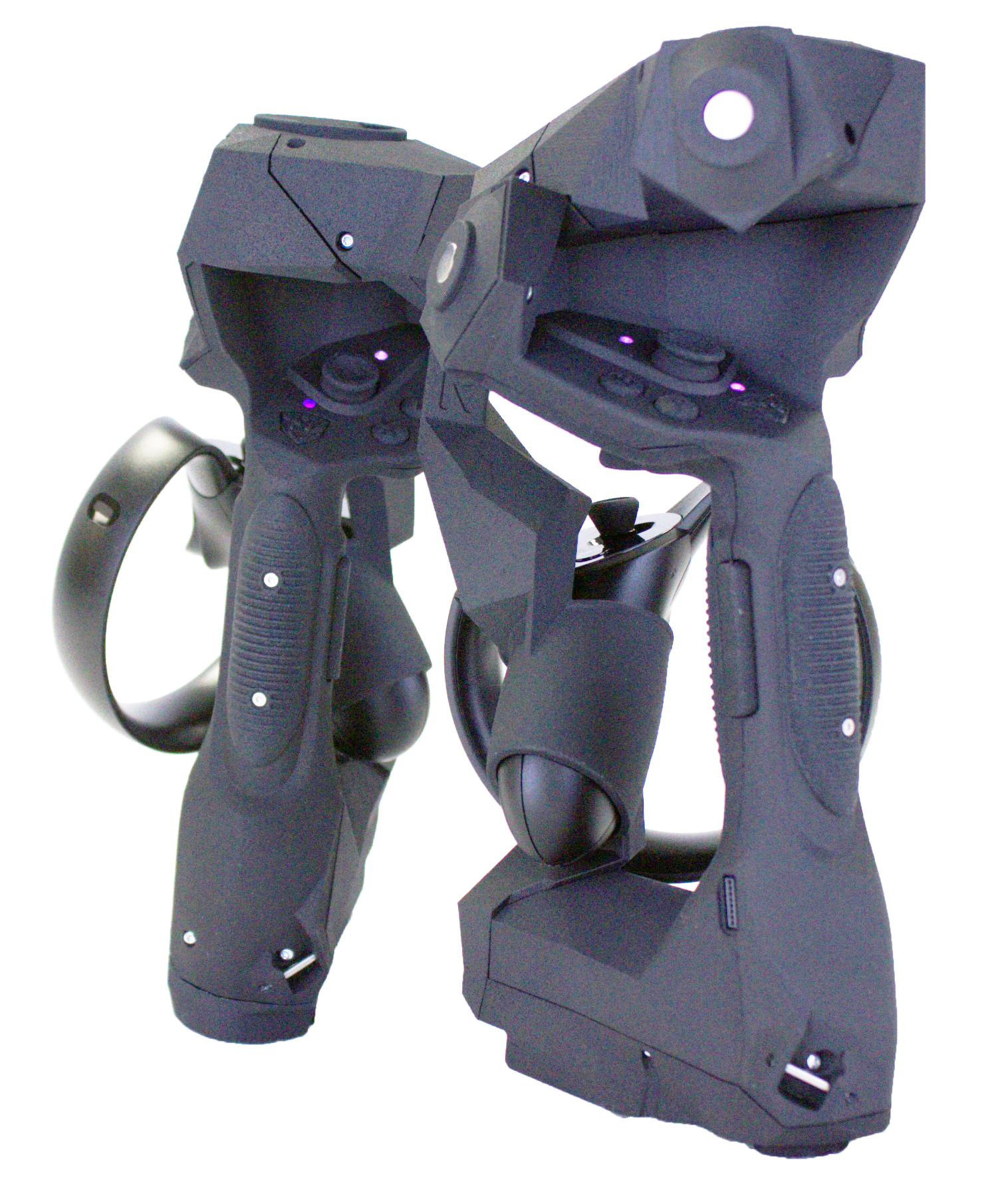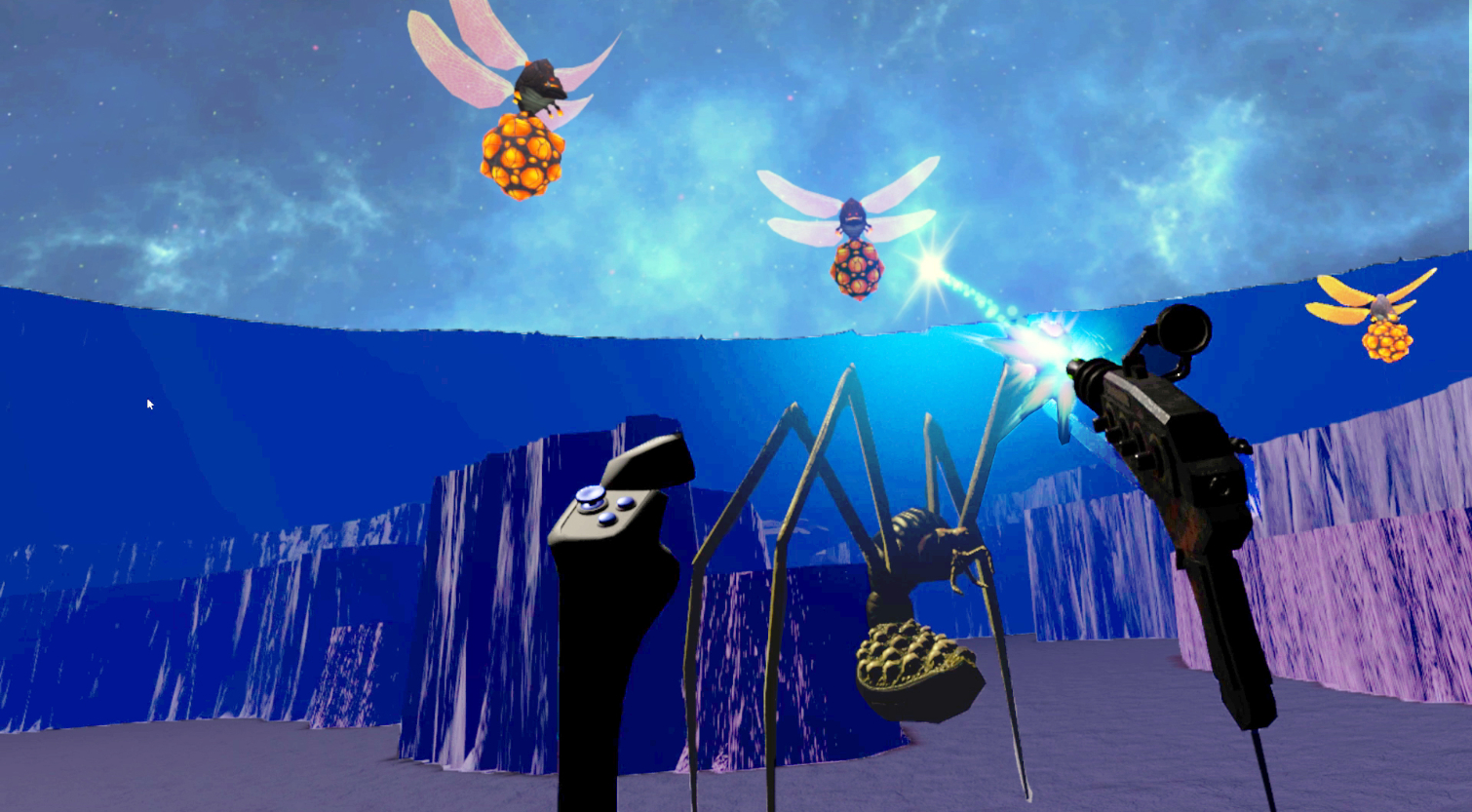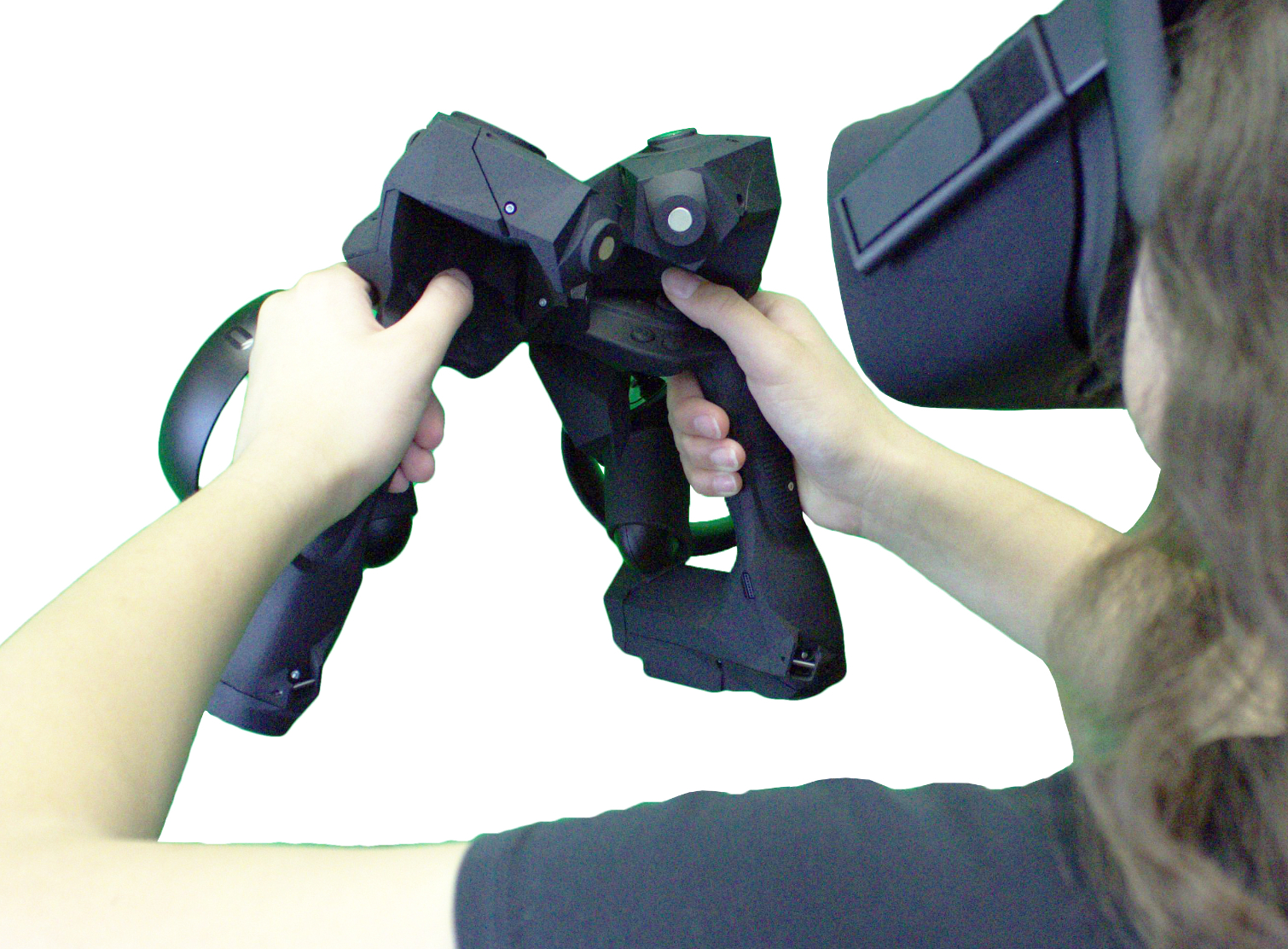Tactical Haptics Introduces Transformable VR Controller At CES
LAS VEGAS, NV -- Tactical Haptics revealed a VR peripheral that can be reconfigured for different game mechanics on-the-fly, so you can switch from wielding a sword, using a two-handed weapon, and driving a car, all with the same controller and without leaving VR.
Tactical Haptics designed the new VR controllers to support the Oculus Rift and the HTC Vive. The controllers don’t work on their own, but pair with the peripherals from each platform to extend the capabilities of the existing input systems. The model that Tactical Haptics is showing off at CES features slots to mount the Oculus Touch controllers. It also created a model for the Vive, which features mounting points for Vive Trackers.
This isn’t the first time we’ve heard about Tactical Haptics. In late 2016, the company secured $2.2 million to fast-track the development of its force feedback system that “applies in-hand shear force to create compelling physical feedback.” The company later demonstrated a prototype controller at GDC 2017 and announced a plug-in for Unity developers could use to add support for the company’s proprietary haptics system.
Tactical Haptics' latest controller design uses the company’s force feedback technology, which can simulate inertia, elasticity, and impact forces in your hands. But we already knew that Tactical Haptics was building that technology. The exciting surprise is the company’s new modular controller configuration system that lets you change the controller’s function on-the-fly. Several companies are working on haptic gloves for VR, including HaptX and Dexta Robotics. Tactical Haptics is the only company we know of that is building controllers that adapt to the needed game mechanic.
The Tactical Haptics controllers are quite large compared to the compact Touch controllers, but in this case, that’s a benefit. The extra mass of the controller provides mounting points where you can mate the two devices to form a variety of different controller configurations. The base configuration for the Tactical Haptics controllers features two separated motion controllers that you can use for hand interactions and single-handed weapons, such as pistols, or a sword and shield. When the game calls for a two-handed interaction, such as holding a rifle or driving a car, you can fuse the two controllers together to better match the input device with the interaction.






The controllers feature an array of mechanical fasteners that hold the controllers together in several configurations. You can join the two controllers together in the center to form a makeshift gamepad, or you can attach them at the top to create a V-shaped controller that can simulate a steering wheel or flight rudder. And you can attach from front to back to create a two-handed rifle peripheral.
Tactical Haptics said there are two versions of the modular motion controllers. The company created a model that features slots to attach the Oculus Touch controllers. Tactical Haptics also created a model that has mounts for HTC's Vive Trackers. Each controller features a variety of inputs, including grip buttons on the handle, two face buttons for your thumbs, a thumbstick for navigating menus, and triggers for grabbing and shooting.
Get Tom's Hardware's best news and in-depth reviews, straight to your inbox.
Tactical Haptics created a game called Colony Defense to demonstrate the capabilities of the new controllers. Colony Defense is a first-person strategy game in which you must protect a space colony from invading insects. To start the game, you must “build” your turret by attaching the two controllers. Tactical Haptics said that the Colony Defense demo is a “work in progress” but it “nicely demonstrates the potential for reconfigurable controllers.”



While we’re sure that Colony Defense does its job to demonstrate the potential, we can’t help but imagine playing a game like Grand Theft Auto in VR with these controllers. That kind of game would really highlight the need for a controller that can adapt as you play.
Tactical Haptics didn’t mention a release date, and the company didn’t discuss pricing. In fact, it seems the company is abandoning the consumer market in favor of the location based entertainment business. Imax is already using the Tactical Haptics controller for the Justice League VR experience, and Tactical Haptics said that it is “seeking partner opportunities with high-profile LBEs as well as manufacturing partners while at CES” as part of its “near-term refocusing on location based entertainment.” Hopefully, we’ll eventually see a consumer model hit the market.
Kevin Carbotte is a contributing writer for Tom's Hardware who primarily covers VR and AR hardware. He has been writing for us for more than four years.
